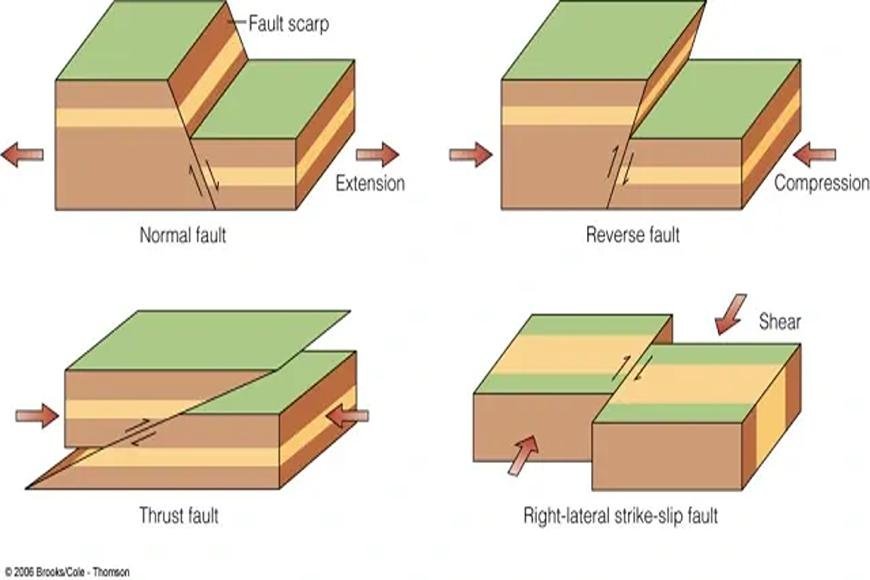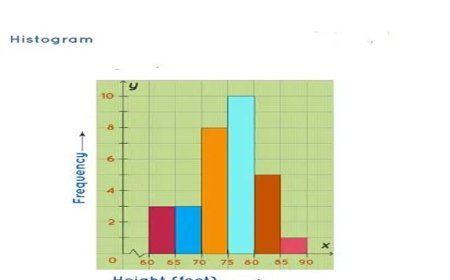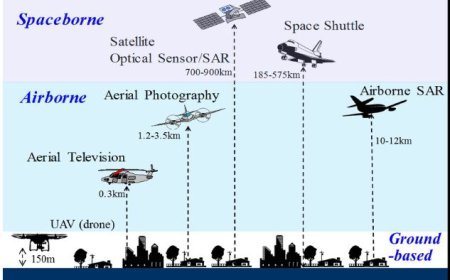FAULT AND ITS TYPES
Earth's fractured zones: Discover faults - cracks in the crust - and their diverse types (normal, reverse, strike-slip).

FAULT
- A fault is a break in the rock between two blocks, or a group of breaks. Because of faults, the blocks can move around in relation to each other.
- Changes can happen quickly, like an earthquake, or slowly, like creep. Faults range in length from a few millimetres to over 4,000 kilometers.
- Most flaws make the earth's crust move over and over again over time.
- The rock on one side of the crack quickly moves away from the rock on the other side during an earthquake.
- There are many possible slopes for the crack, from flat to steep and everything in between.
- A fault plane is the flat area that shows where a problem is. Where a fault plane hits the ground is called a fault path, which is also called a fault line.
- You can also see a fault on a geology map by a line called a fault trail.
Types of faults
- Based on how the two blocks move, faults are split up into smaller groups.
There are four kinds of faults:
Normal fault
- A dip-slip fault means that the block above the fault has moved below the block below it.
- When something is stretched, this kind of flaw shows up. "What falls when the "hung wall" goes up and the "foot wall" goes down?"
Reverse fault
- Above the fault plane, the top block moves up and over the bottom block.
- A dip-slip fault is the name for this. A lot of this kind of faulting takes place where there is compression.
- When the dip slope is not very steep, a reverse fault is also known as a thrust fault.
- This occurs when the "hanging wall" travels above or below the "foot wall."
Strike-slip fault
- The two blocks can slide past each other because of a bug.
- The San Andreas Fault is on the right side.
Types of strike-slip fault movements
A left-lateral strike-slip fault
- Stand on this kind of strike-slip line and look along its length.
- The block on the left moves towards you, while the block on the right moves away.
Strike-slip fault running from right to left
- Place yourself on the flaw and look all the way along it.
- The block on the right goes towards you, while the block on the left moves away.
- This is a strike-slip line.
What's Your Reaction?



































